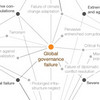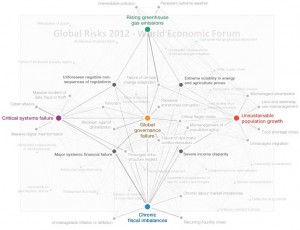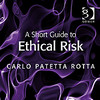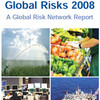 Are economic imbalances and social inequality risk reversing the gains of globalization? Should we shift our concern from environmental risks to socioeconomic risks? Will further economic shocks and social upheaval roll back the progress globalization has brought? How well are the world’s institutions equipped to cope with today’s interconnected and rapidly evolving risks? These are the questions asked by the seventh edition of the Global Risk Report, just out.
Are economic imbalances and social inequality risk reversing the gains of globalization? Should we shift our concern from environmental risks to socioeconomic risks? Will further economic shocks and social upheaval roll back the progress globalization has brought? How well are the world’s institutions equipped to cope with today’s interconnected and rapidly evolving risks? These are the questions asked by the seventh edition of the Global Risk Report, just out.
Risk centers and connectors
This year’s risk map is rather different from the map presented in 2011. Last year, the map was presented in a likelihood-impact risk matrix fashion, and not that easy to read, since there were simply too many risks and too many connections. Economic disparity and global governance failures were at the center, with other risk scattered around:
This year the map has changed. Based on a survey of 469 experts and industry leaders, the report identifies 5 centers of gravity (top 5 risks), and 4 critical connectors, hence the diamond shape of the diagram:
To me, this makes the report and its conclusion much easier to understand.
A new methodology
The seventh edition of the Global Risks report is based on a revamped methodology combining surveys, workshops and interviews that engage various stakeholders of the World Economic Forum. The starting point is a set of 50 global risks – which are defined as having global geographic scope, cross-industry relevance, uncertainty as to how and when they may occur, and high levels of economic and/or social impact requiring a multi-stakeholder approach to response. They are divided into five categories: economic, environmental, geopolitical, societal and technological risks. In each category there is a center of gravity and four connectors between the category, with additional weak signals at the outer edge.
Centers of gravity
– Chronic fiscal imbalances (economic)
– Greenhouse gas emissions (environmental)
– Global governance failure (geopolitical)
– Unsustainable population growth (societal)
– Critical systems failure (technological)
Connectors
– Severe income disparity (economic)
– Major systemic financial failure (economic)
– Unforeseen negative consequences of regulation (economic)
– Extreme volatility in energy and agriculture prices (economic)
Weak signals
– Vulnerability to geomagnetic storms (environmental)
– Proliferation of orbital debris (technological)
– Unintended consequences of nanotechnology (technological)
– Ineffective drug policies (societal)
– Militarization of space (geopolitical)
Three constellations of risks
Three distinct constellations of risks that present a very serious threat to our future prosperity and security emerged from this year’s set of risks:
– The seeds of dystopia
Dystopia, the opposite of a utopia, describes a place where life is full of hardship and devoid of hope. Many countries are currently heading towards dystopia, where the failure to manage ageing populations, youth unemployment, rising inequalities and fiscal imbalances may lead to greater social unrest and instability in the years to come.
– How safe are the safeguards?
Safeguards and regulations are necessary and needed in a world that depends on technology, but as the systems on which the global economy relies become increasingly interdependent and complex, what is meant as a mainly national regulation can capable of having unintended repercussions globally. What one country does, can affect many.
– The dark side of connectivity
The critical infrastructure15 that underpins our daily lives increasingly depends on hyperconnected online systems. The security of these systems are no longer just a matter of private concern, they have become a public good and new mechanisms are urgently required to secure private investment in exploring existing system vulnerabilities before they can be exploited.
Conclusion
Now in its seventh edition, the Global Risk Report is perhaps the most comprehensive report on the most important global risks that have the potential to shape our shape, change and disrupt if not destroy our future. It is a report that should be read and acted upon, it is not a mere whitepaper, it is a tool for a less worrysom future.
Related link
- weforum.org: Global Risks 2012 (interactive)
- weforum.org: Global Risks 2012 (pdf)
Related posts
- husdal.com: Global risks and global supply chains
- husdal.com: Transportation risks in global supply chains














